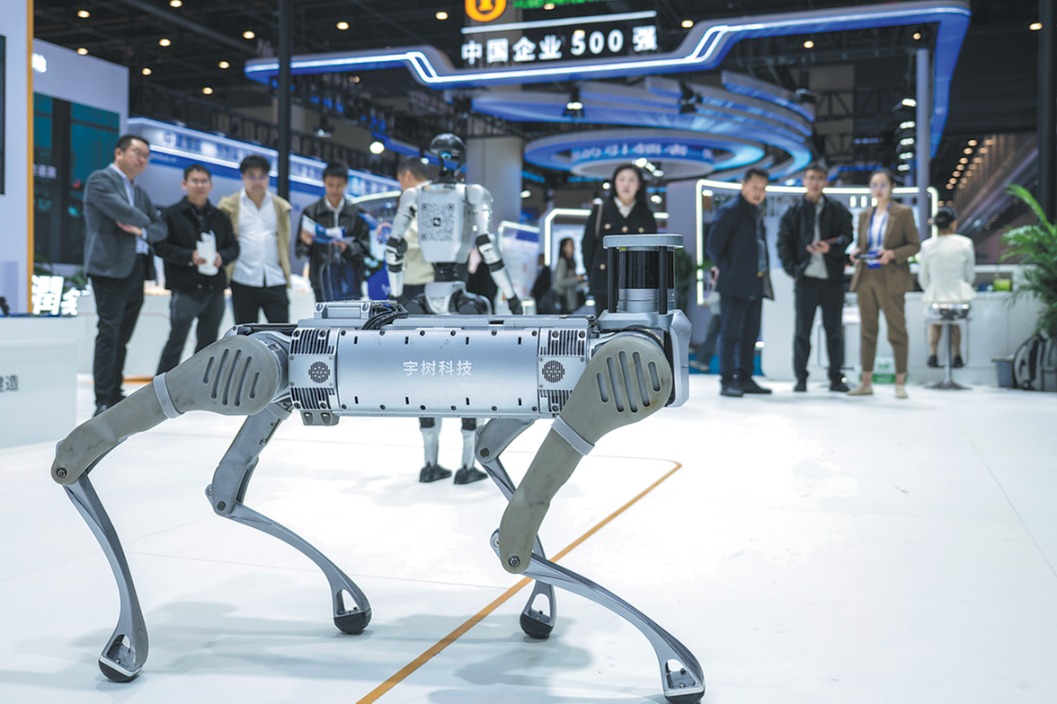Myth of autonomy


European strategic autonomy does not signify a break from the US, but rather an effort to sustain the transatlantic partnership under evolving global conditions
While European strategic autonomy (ESA) is frequently invoked in the European Union policy discourse, it remains an ambiguous concept, encompassing diverse meanings and realities in security and foreign policy.
At first glance, ESA appears to express the EU's ambition to act independently in global affairs — free from the constraints of its reliance on the United States. Many scholars, commentators and analysts have interpreted it as evidence of a European drift away from Washington. However, a closer examination of EU law, institutional structures and recent political practices suggests otherwise. Rather than signaling a rupture, ESA is positioned as enhancing Europe's capacity to act within the transatlantic order — to share burdens and sustain the US-led order amid global realignment.
The legal foundations of the EU's Common Security and Defense Policy make clear that Europe's autonomy is constrained by its NATO commitments. Article 42(2) of the Treaty on European Union — part of the Treaty of Lisbon — stipulates that the EU's policy shall respect the unique defense policies of member states and remain consistent with the obligations and principles of NATO. It clearly acknowledges NATO's leading role for its member countries, ensuring that EU defense efforts complement rather than compete with the Alliance. The mutual assistance clause in Article 42(7) reinforces this principle, requiring EU members to support one another in case of aggression in line with their NATO commitments. The annexes and protocols to the Treaty of Lisbon further reinforce this, and EU official documents consistently emphasize that strategic autonomy is to be pursued "in complementarity with NATO". In short, the treaties leave little room for truly independent security: the EU's defense identity is legally and institutionally embedded within the transatlantic alliance.
The European Council and the European External Action Service have echoed this position. The European Council's 2021 "Issues Paper" on strategic autonomy explicitly framed the concept not as "a rejection of NATO or of the transatlantic alliance", but as a means of developing capabilities that would enable Europe to engage more proactively with Washington and "contribute to filling the leadership vacuum left by the US, as its focus shifts more firmly toward domestic matters and the Asia-Pacific region". In other words, ESA seeks to strengthen Europe's contribution to the transatlantic partnership at a time when the US is adjusting its global priorities. Similarly, the European Council's 2022 conclusions on the autonomy of the European financial and economic sectors emphasized resilience and self-reliance rather than disengagement, aiming to reduce excessive dependence on any single actor while remaining part of a cooperative network of like-minded partners.
The EU's concrete actions since 2022 confirm that its autonomy agenda is aimed at reinforcing, not weakening, transatlantic ties. In the wake of the Ukraine crisis, European leaders have called for increased defense spending and enhanced military capabilities. The appeal by German Chancellor Friedrich Merz and French President Emmanuel Macron for Europe to shoulder more responsibility for its own security was not a call to detach from NATO, but a recognition that the US cannot indefinitely bear the entire burden of European defense. The NATO Hague Summit of 2025, where member states committed to raising defense expenditure to 5 percent of GDP by 2035, exemplified this shift. It reflected not transatlantic estrangement, but a redistribution of burdens within a shared framework.
The EU's top foreign policy officials, including High Representative for Foreign Affairs and Security Policy Kaja Kallas and her predecessor Josep Borrell, have consistently emphasized that the transatlantic partnership remains central to European security. Meanwhile, the EU has launched initiatives to strengthen its internal defense capacities and industrial base. Projects such as the development of "European intelligence satellites", the "Readiness 2030" program for defense production and "new joint procurement mechanisms" aim to enhance Europe's operational capabilities. From the perspective of the EU political elites, ESA represents a partnership with the US from a position of strength, not separation, reflecting a long-standing European conviction: the enduring global hegemony of the West relies on the combination of European ingenuity and US power.
From a broader geopolitical perspective, shaped by great power competition and transformations in the global order, ESA appears both logical and rational. Yet, despite what the wording might suggest, its essence should be understood as a pragmatic response to shifting realities, rather than ideological anti-Americanism. The US is increasingly focused on strategic competition in the "Indo-Pacific" region and grappling with domestic political divisions that cast doubt on its long-term willingness to safeguard European security as it has in the past. In this context, European policymakers seek to hedge against uncertainty by enhancing their own capabilities. ESA, in this sense, functions as "self-funded insurance" within the transatlantic system, ensuring that Europe can act when the US cannot or will not. Nevertheless, alignment and alliance with the US remain the EU's highest foreign policy priority, reflecting its overarching objectives of defending the US-led liberal order and countering perceived adversaries. The Dutch government's seizure of the Chinese-owned chipmaker Nexperia is a clear example of Europe's alignment with the US in the strategic technological rivalry against China.
In addition to ESA's legal and operational constraints, Europe continues to rely on the US for nuclear deterrence, satellite intelligence, command-and-control infrastructure and critical defense technologies. The EU's defense industry remains fragmented along national lines, and many member states, particularly in Eastern Europe, remain deeply committed to the US security umbrella, which they consider more credible than any collective European guarantee. Even as European defense budgets grow, a significant portion of new spending is directed toward US weapon systems, a structural reality of the transatlantic relationship. This reliance is further illustrated by the recent EU-US tariff arrangement.
Hence, the idea of ESA is largely a myth, constructed through articulated discourses and narratives. The language of ESA — particularly during the Ukraine crisis — enables European leaders to signal to domestic audiences and global competitors that Europe is reducing its dependence on Washington and emerging as a more independent power with autonomous agency. In practice, however, ESA represents a recalibration of Europe's position within the enduring Atlantic framework, characterized as a "partnership of unequals", which ESA seeks to rebalance through enhanced capabilities rather than political rupture. The real challenge lies in whether ESA's rhetoric is matched by sustained investment, institutional reform and political unity, especially in the context of slowed economic growth, high inflation, soaring energy prices, rising populism and the Ukraine crisis.
Europe's "autonomy" will not be defined by a choice between subordination and independence, but by the extent to which it can transform burden-sharing into genuine co-decision-making within the alliance. For the US, a more capable Europe presents both a relief and challenge. It can reduce the burden of free-riding, but may also create moments of strategic divergence, particularly in regions such as the Middle East, North Africa and the "Indo-Pacific" region.
In conclusion, Europe seeks to assume a greater share of strategic responsibility while continuing to operate within the broader framework of US leadership.
The author is a Yunshan leading scholar and the director of the European Research Center at Guangdong Institute for International Strategies at Guangdong University of Foreign Studies, and an adjunct professor of international relations at Aalborg University, Denmark. The author contributed this article to China Watch, a think tank powered by China Daily.
The views do not necessarily reflect those of China Daily.
Contact the editor at editor@chinawatch.cn.


































